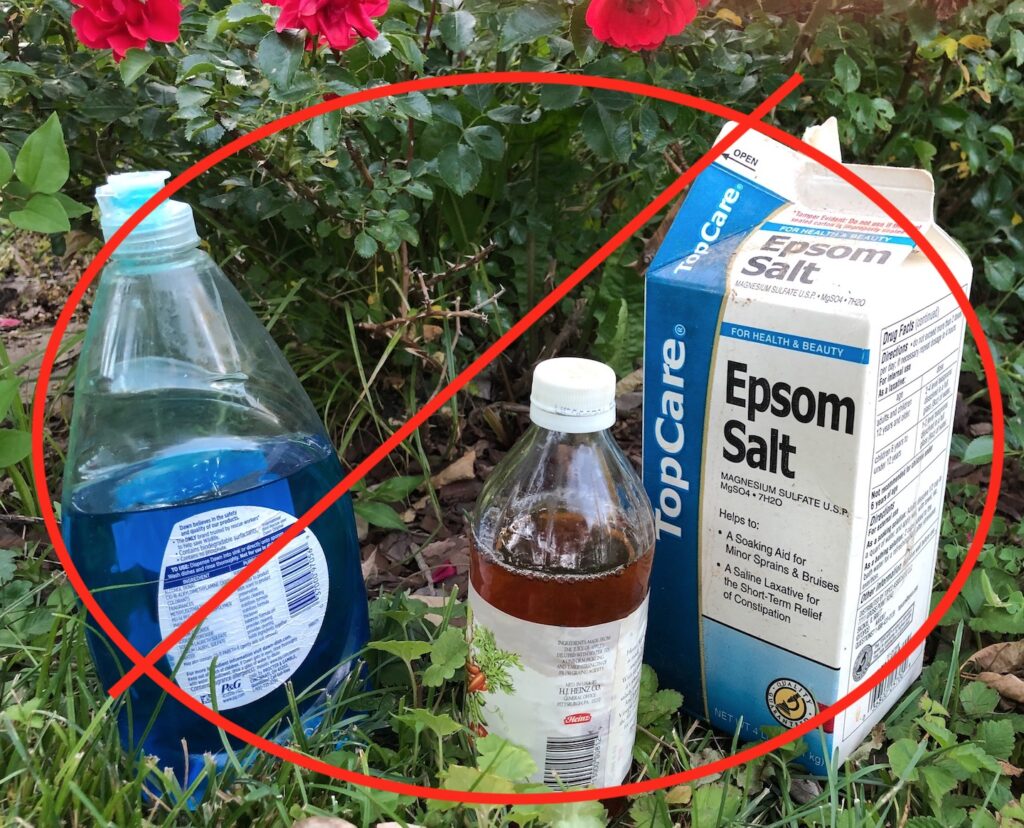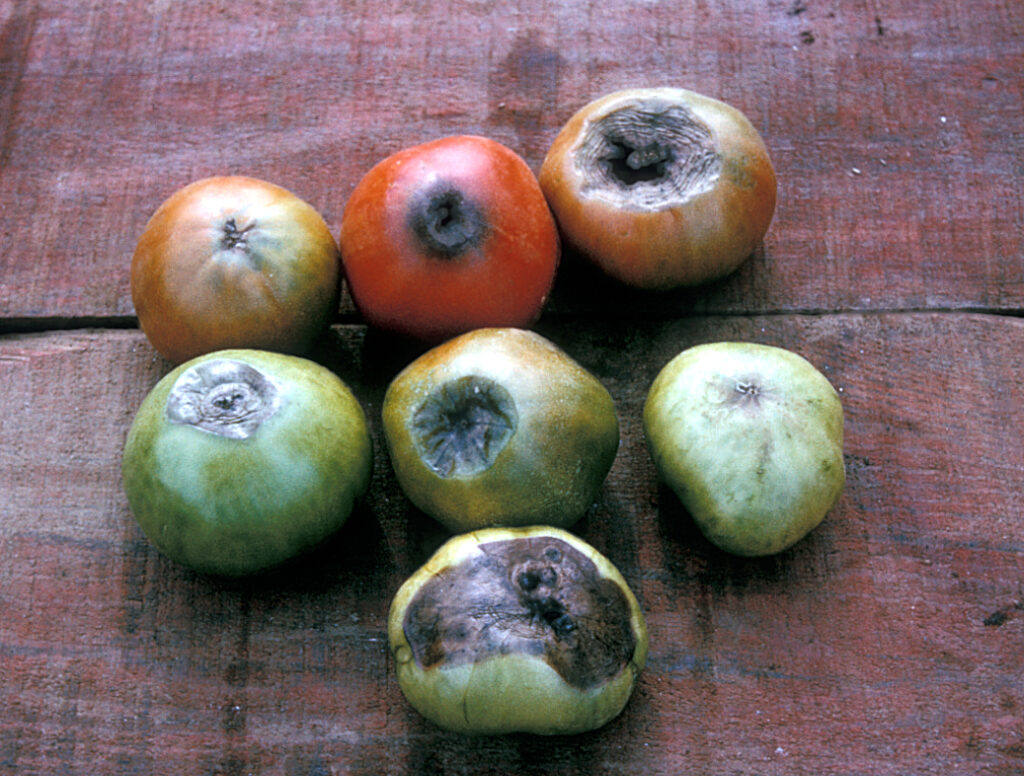If you spend any time at all on social media that feature gardening information, you’ve no doubt read how you can get rid of weeds with dishwashing detergent, vinegar and Epsom salts.
As a Master Gardener, I prefer science-based solutions to problems in my landscape. Many, if not most homemade remedies, are ineffective or they can cause more damage to the soil, plants or environment.
So, I ask readers to investigate the remedies they want to use in their garden. For starters, Google your problem, such as blossom end rot, then plug in Purdue or another university or .edu. That way you’ll find information that will help you solve your problem.
Garden Myth 1 Non-chemical weed killers
Every year, for weeks, this homemade — vinegar, dishwashing detergent and Epsom salts — weed killer meme runs on Facebook, Twitter, Instagram, TikTok and who knows where else. The postings are usually followed by dozens of testimonials about the “non-chemical” weed killer.
First, vinegar is a chemical acid, Epsom salts are a chemical compound and dishwashing detergents are made with chemicals. Besides that, the homemade weed killer does not work. Sure, it might kill the top growth of a weed, but the roots survive. It may kill very small plants totally, but again, there’s concern about those pollutants in the soil.

Let’s break it down
There is a horticulture vinegar that is effective at killing top growth. Regular household vinegar is 5%, while horticulture vinegar is 10% or more acetic acid.
The dishwashing detergent is a surfactant or sticker to help the vinegar and Epsom salt solution to stick to the leaves.
The Epsom salts are a salt, which can damage plants. This compound is effective if your soil has tested low in magnesium. Salts kill plants.
Instead, smother weeds with plastic, cardboard or other light-blocking material. Consider using an herbicide that is manufactured and tested for killing weeds and is registered with the EPA. There are organic herbicides. Always read and follow the label directions.
Garden Myth 2 Pennies for hydrangeas
Some gardeners try to get a big leaf hydrangea (H. macrophylla) to bloom blue flowers by putting one or more pennies in the planting hole. The thinking is the copper in the pennies will create the correct soil environment for blue flowers. If only it would be that easy.
First, it would take a lot of pennies for this to happen. Enough pennies that there’d be no room for a plant in the hole. Indiana’s soil runs alkaline and so does the water. For hydrangeas to have blue flowers, the soil needs to be acidic.

How to get blue hydrangea flowers
Apply fertilizer specifically formulated for acidic plants. Aluminum sulfate, Espoma Holly-tone or Soil Acidifier are good choices for hydrangeas. These are natural or organic products produced in a solar-powered manufacturing plant.
Garden Myth 3 Tums for tomatoes
Gardeners are sort of on the right track when they think adding calcium to the soil when planting tomatoes will prevent blossom end rot. Blossom end rot – that black, leathery section on tomatoes, peppers and squash – is related to calcium.
Blossom end rot is a condition, not a disease. Insects have nothing to do with it. The black spot commonly appears on the first fruits produced by the plant. The fast growth of plants and irregular watering is one cause.

When people see blossom end rot on their fruit, they add calcium by dissolving Tums and applying as a liquid. When the next fruit comes on without blossom end rot, the gardeners claim success, when actually what’s happened is the plant’s growth rate has stabilized compared to what it was when newly planted.
Other causes for blossom end rot
Others causes are planting tomatoes, peppers and squash too early before the soil heats up. Drought, excessive heat and low humidity also cause problems because bees don’t move around too much under these conditions. Inactive bees reduce pollination.
Indiana soil has plenty of calcium available. However, the mineral needs water for the roots to take it up and move it through the plant into the fruit. If there’s a lack of water, the calcium cannot move through the fruit. The calcium settles at the bottom of the fruit to form blossom end rot.
The fruit is safe to eat once the damaged area is removed. However, don’t use those tomatoes in canning.
TIP: Peppers prefer a warmer soil than tomatoes at planting time. So, hold off planting peppers until a couple weeks after you plant tomatoes.
How to prevent blossom end rot
Prevent blossom end rot by watering fruiting plants regularly. Regular watering also ensures good fruit production.